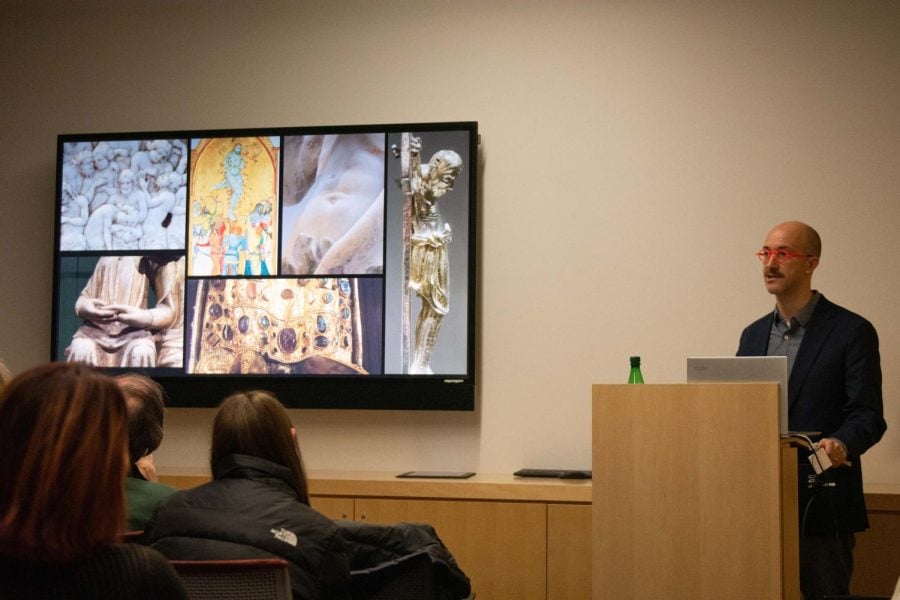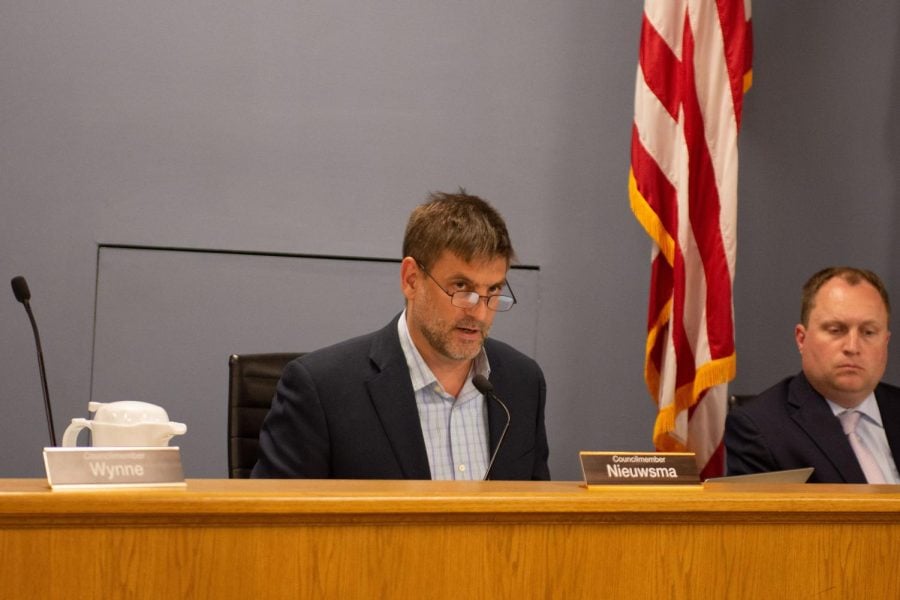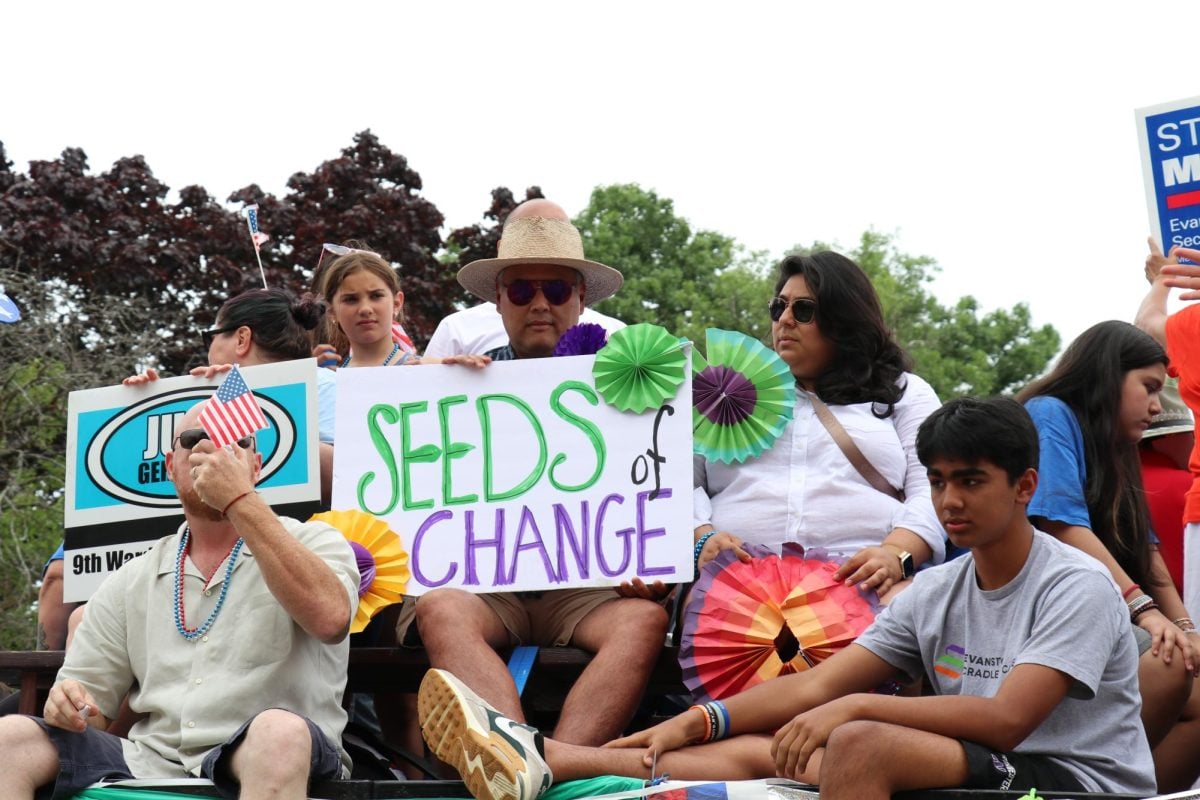Author Karl Whittington explores relationship between queer identities and art at Medieval Colloquium
Samantha Powers/The Daily Northwestern
Author and The Ohio State University Prof. Karl Whittington used photos of medieval art to illustrate his theories on the connection between the art of sculpting and queer identities during an event Thursday.
January 13, 2023
Karl Whittington, chair of the department of history of art at The Ohio State University, spoke about queer interpretations of four medieval sculptures across different mediums Thursday night.
His lecture was part of the English department’s eleventh Medieval Colloquium, a year-long series of events focused on the interdisciplinary study of medieval artifacts and culture.
Whittington analyzed the medieval artists’ act of sculpting the human body through a queer lens. He said the medieval period marked the birth of large-scale persecution of homosexuality. Whittington also explored the idea that art may have been an outlet by which artists could express queer desire.
For Bridgette Hulse, a fourth-year medieval archaeology Ph.D. student, Whittington’s work helps humanize the artists in a new way.
“Even though the cultural context is vastly different, there are still similarities across time,” Hulse said following the event. “Analyses that allow for identities that historically, in these disciplines, haven’t been brought to the forefront, are a more accurate way of representing the wide breadth of human experience.”
Whittington said though art historians have begun recognizing the existence of queer artists, there is still resistance to queer analyses.
Whittington added that he hopes to bring queer lenses to the forefront.
“Art history is a very conservative field in a lot of ways,” Whittington said. “It’s very tied to the museums and the protection of capital and value with art. So, people don’t want artworks knocked off their pedestals because those artworks hold value for institutions, and once you make something about something else, it changes that value.”
After the lecture, attendees offered their insights, and Whittington retrieved a pen and paper to jot down their ideas.
He said it was great to have these suggestions as he worked on his next book, “Queering Acts of Making: Desire and the Creation of Medieval Art,” since he began the project just six months ago.
“Everyone talks about it being kind of scary to present work that you’re really just starting on,” Whittington said. “When I got asked to give a talk here, I had just finished a book project that I could have presented that’s all tied up with a bow and ready to go, but it’s a lot more helpful to do this.”
During the presentation, Whittington also explored artists’ emotional reactions to the physical act of sculpting. He said artistic perspectives could range from discomfort to enjoyment.
Anna Cohen, a third-year art history Ph.D. student, said the lecture made her feel more connected to her studies through a more thorough examination of artists’ humanity.
“As a queer person, I can locate my present self in a historical moment,” Cohen said. “To see that queerness isn’t a modern development, it’s actually something that existed throughout history, and that I am just the inheritor of this long tradition instead of being the first person, is very comforting.”
Email: [email protected]
Related Stories:
— “Caravans of Gold” exhibition presents first-of-its-kind look into medieval African art, trade
— Northwestern art history students curate Block Museum exhibit
— Art can be around you’: A deeper look at Evanston sculptures’ history and messages












